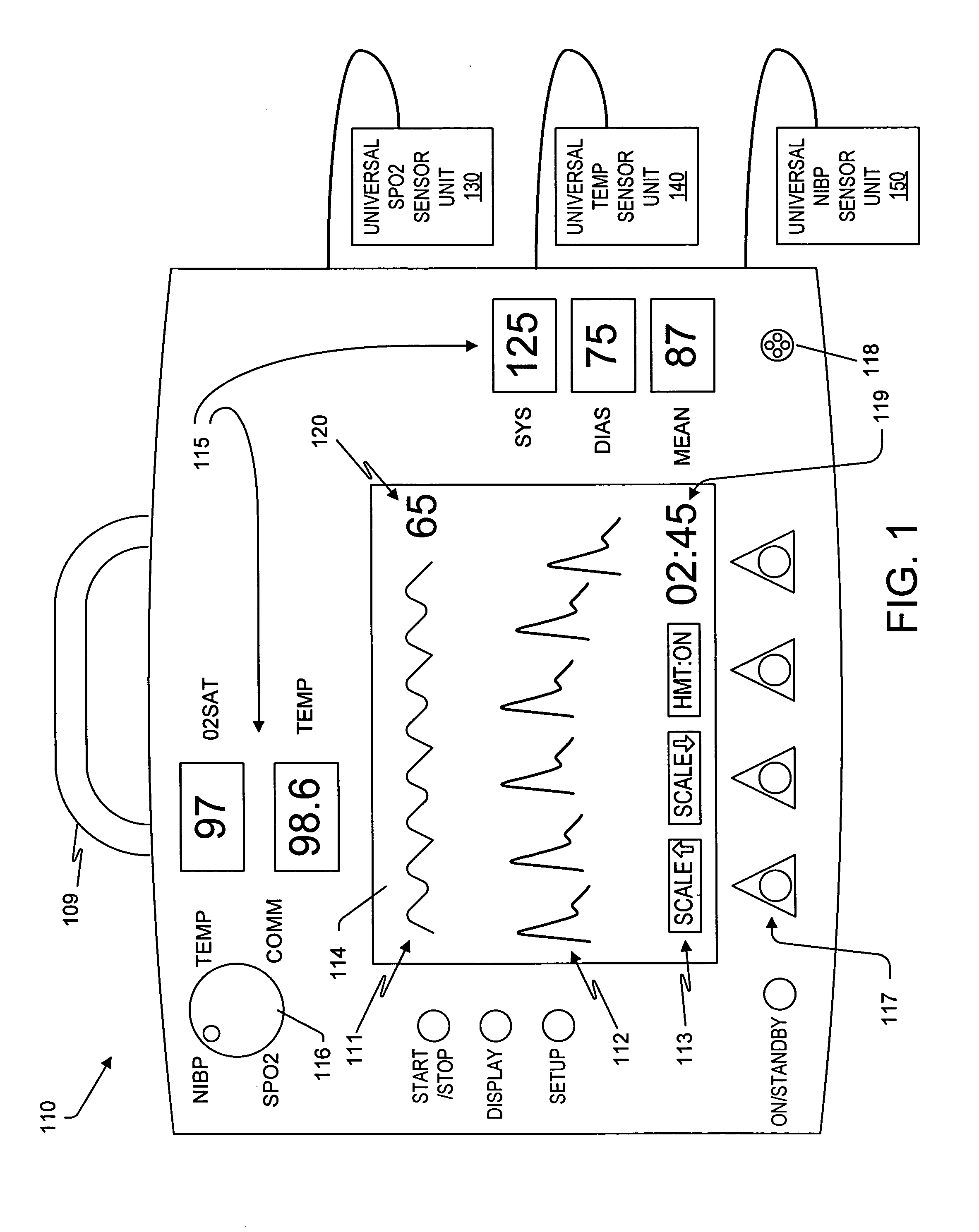Universal transportable vital signs monitor
a monitor and universal technology, applied in the field of vital signs monitors, can solve the problems of affecting any “downstream oxygen saturation, not entirely suitable for frequent measurements and measurements,
- Summary
- Abstract
- Description
- Claims
- Application Information
AI Technical Summary
Benefits of technology
Problems solved by technology
Method used
Image
Examples
Embodiment Construction
[0032]FIG. 1 shows a transportable vital signs monitor 110 that can accommodate patients over a broad range of body sizes. The monitor 110 has a plurality of connectors (not shown) which are configured to accept connections to various universal sensors, preferably vital sign sensors such as blood oxygen saturation (SpO2) sensor unit 130, temperature sensor unit 140, and non-invasive blood pressure (“NIBP”) sensor unit 150. The monitor 110 also has a graphical display 114, illustratively a LCD display of about 4.5 inches by 2.5 inches, that visually displays various waveforms and other information of use to the caregiver. Shown are an SpO2 waveform 111 and a waveform trend display 112, which shows the patient's arterial waveform in mmHg and is designed for routine monitoring. The graphical display may also display other information as desired, including programmable labels 113 such as “Scale Up,”“Scale Down,” and “HMT:OFF,” which are respectively associated with keys 117 and which ma...
PUM
 Login to View More
Login to View More Abstract
Description
Claims
Application Information
 Login to View More
Login to View More - R&D
- Intellectual Property
- Life Sciences
- Materials
- Tech Scout
- Unparalleled Data Quality
- Higher Quality Content
- 60% Fewer Hallucinations
Browse by: Latest US Patents, China's latest patents, Technical Efficacy Thesaurus, Application Domain, Technology Topic, Popular Technical Reports.
© 2025 PatSnap. All rights reserved.Legal|Privacy policy|Modern Slavery Act Transparency Statement|Sitemap|About US| Contact US: help@patsnap.com



